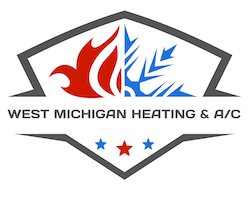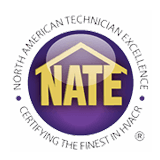
A furnace is almost always a background player in your home, keeping you warm across the cold winter months. It regularly isn't noticed until a malfunction appears.
One root cause could be that your furnace has a cracked heat exchanger. It can potentially be hazardous, so it’s important to learn the signs of a cracked heat exchanger and what you should do if you suspect that is the problem.
What Is a Heat Exchanger in a Furnace?
A heat exchanger helps transition heat from the combustion chamber of your furnace to the air that moves through the ventilation. It usually handles this with coils or tubes that heat up the air while functioning as a barrier to keep the gasses produced in the combustion chamber, called flue gasses, from escaping out into your home.
Is a Cracked Heat Exchanger Dangerous?
Because of its important role, it’s no surprise that a broken heat exchanger can be hazardous. A damaged heat exchanger can permit dangerous gasses – like carbon monoxide, which can be lethal – to flow through your home.
For obvious reasons, never run your heating if you suspect it has a cracked heat exchanger, as doing so could make the entire household sick. Reach out to an HVAC professional as soon as possible if you think your heating has a cracked heat exchanger that should be repaired.
Four Warning Signs of a Cracked Heat Exchanger:
- Furnace switches off: Cracks in the heat exchanger can cause your furnace to switch off.
- Strange Smells: If the air escaping your furnace has a strong chemical odor, it may be an indicator that gas is leaking through cracks in your heat exchanger. These gasses, which will often smell like formaldehyde, are a common warning sign.
- Carbon monoxide alarm is triggered or you feel poisoning symptoms: If a cracked heat exchanger is releasing carbon monoxide in your home, your carbon monoxide alarm should go off or family members might start experiencing signs of carbon monoxide poisoning. Side effects include headaches, dizziness, weakness, nausea, vomiting or feeling tired. If your alarm goes off or you feel sick, leave the home right away and then call for help.
- Soot: If you find black sooty buildup near the exterior of your furnace, it’s more evidence something might be seriously wrong.
What You Should Do if a Furnace Heat Exchanger is Cracked
If you suspect your furnace has a cracked heat exchanger, hire a pro with extensive experience in furnace installation Hudsonville right away so they can take a look at your system and, if necessary, perform a furnace heat exchanger replacement. Costs should differ depending on the situation, but estimates run in the neighborhood of $1,000 to $3,000.
Estimates aside, the good news is that heat exchangers are generally covered by the warranty. You should confirm the warranty paperwork on your furnace, because while the warranty may not cover the entire cost of repairs, it could significantly lower your bill.
How to Prevent a Cracked Heat Exchanger in Your Home
One of the most convenient ways to prevent a problem in your furnace overall is via consistent furnace maintenance. Furnaces offer the most benefits when they run efficiently. Calling a skilled professional to inspect your furnace for broken-down parts, clogs in the air filters and other likely problems can keep you from getting a big bill later on.
It’s also beneficial to review your furnace filters every few months – it’s recommended some filters be replaced every 90 days or sooner if they are dirty or grimy. While the filters aren't a part of the heat exchanger itself, the strain of drawing air through a clogged filter makes the entire furnace work more vigorously to do its job. And the harder your furnace has to work, the more deterioration parts like the heat exchanger will endure.


